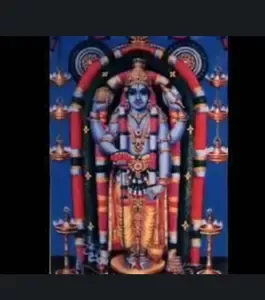
Custom Search
Book Review of The Broken Amoretti
by Ananya Sarkar
(Kolkata, India)
The Broken Amoretti | Sudipto Das & Aparajita Dutta
Niyogi Books, 2019
ISBN 978-93-86906-83-0
Pages: 294, Price: INR 450
The Broken Amoretti, co-authored by Sudipto Das & Aparajita Dutta, is a novel that explores alternate love or same-sex love with its complicated ramifications. However, it is different from other fiction in the same genre in a major way. Here, the lesbian love story, which would understandably have been the subject of much stigma in the 1980s’ India (backdrop of the novel), is camouflaged in the form of an encrypted poem. Creatively combining verse, ancient myth, and epic, the book delves deep into how same-sex love, especially lesbian love, always took recourse to oblique ways of expression.
The novel opens with the narrator, Saoli, finding a diary in her late grandfather’s home, where she has moved in recently. After a spate of broken relationships and a failed marriage in the US, Saoli is happy to have got a teaching position at IIT Kharagpur and start her life anew. She moves in to the vacant home of her grandfather in Kharagpur as it would be close to her workplace. While cleaning up the premises, she stumbles upon the diary of the former owner’s wife and therein unfolds the forbidden love story. The diary is filled with the poems and writings of Panchali, whose daughter, Bitasta studied in Saoli’s school. As the narrator knew Bitasta and also her much talked-about love affair with Parush, she takes a natural interest in flipping through the pages. While poring over Panchali’s diary, Saoli, a student of literature and a specialist in the Lyric Mode, soon decodes a hidden truth.
However, to match the facts, she gets in touch with Parush, currently a techie bigshot embroiled in controversy, through his sister. The rest of the novel unfolds as a flashback, with Parush recalling his affair with Bitasta, the friendship between their mothers and what transpired thereafter.
As the past gradually plays out, we gain a deeper understanding of how it led to the present. The Indianization of the Greek myth of Atremis and Callisto as well as reinterpretation of Draupadi’s story in the Mahabharata are innovative. Both of these are part of Panchali’s views. Here, we see an apparently conventional Indian woman support the cause of alternate love, even though she herself fails to live her love story openly.
An undercurrent of lesbian love runs in the story that becomes increasingly more evident. However, the reason why Sairandhri opposes her son, Parush’s marriage to Bitasta, daughter of her childhood friend, Panchali remains shrouded in mystery. This creates a sense of suspense all along. It is only towards the end that Saoli, the narrator, cracks the real reason and brings it to the fore.
The story of Parush and Bitasta gathers momentum when it begins but gets diluted later. Also, for quite a significant portion of the novel, the authors refrain from disclosing Bitasta’s whereabouts. This seems strange (and contrived) since we learn where other characters of her age, who studied in the same school, are positioned. Bitasta deliberately disappears from the pages altogether only to re-enter much later. At that point, some climax or dramatic turn of events appears to be around the corner. But nothing of the sort takes place and eventually the story peters out. This is a tad disappointing.
Regarding the diction of the book, verses interlace the prose from time to time, which makes it pleasantly poetic. That said, there are grammatical errors and awkward phrasings here are there. For instance, on page 274, “nowadays” is spelt as “now-a-days”. On page 260, since “breakup” is used as a verb it should have been “break up” and on page 270, since “workout” is used as a verb the spelling should have been “work out”. Some examples of odd phrases are seen in “with wonderment and jolt in her looks” on page 259 and “I too have to finally accept this to someone else” on page 284. A more thorough editing could have saved the novel from these errors and led to a better reading experience.
Certain impracticalities in the plot also come to notice. For example, Parush making major calls regarding the running of Volcano, a company he joins, without any interference from the CEO or even Board of Directors seems hard to believe. Also, how Parush’s rambling emails describing his experiences to Bitasta could be considered as containing “insider information” leading to his impending arrest seems unclear. As mentioned earlier, instances like these appear to be contrived to create deliberate twists in the story.
Though the characters are round and undergo development in the course of the novel, the central characters, Parush and Bitasta are not that strong and impressive. Both teeter on the verge of stereotypes. While Bitasta is feisty and witty, we see very little of other aspects of herself. Similarly, Parush is the well-known guy, popular among women, who after being wounded in love never fully recovers his sanity. Sadly, they fail to stand out in any particular way.
However, overall, the novel is an engaging read and it does egg on the reader with suspense. Also, dealing with the relatively less explored topic of lesbian love in the Indian context deserves merit. In that respect, it is worth your time.
***









